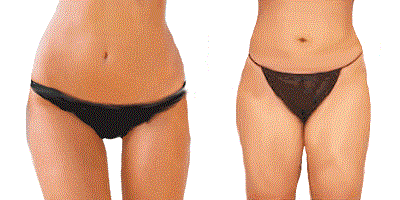Positive Health Online
Your Country

Mind The Gap: From Fashion to Form and Function
listed in bodywork, originally published in issue 212 - February 2014
Have you ever heard of the thigh gap? I hadn’t before reading an article titled Body language (The Guardian 12.11.13). This ‘essential’ reading is all about identifying anatomical bits, not yet taught in medical schools, which have been culled from the Daily Mail’s sidebar of shame, whatever the latter is. The article lists imaginative and novel words (no Latin here) to describe ‘new’ body parts, from sideboob and underboob to sidebutt and bum slip. What caught my attention though was the term thigh gap.

According to this new anatomy, targeting mainly women, a thigh gap is what you have when, standing feet together, you have a visible gap between your upper inner thighs. Apparently, according to the latest demented fashion or trend and its distorted and unhealthy notions of what represents beauty, a thigh gap is a very desirable physical trait. The thigh gap is the new bee’s knees.
My view of beauty is firmly based on health: when in an organism there is perfect adaptation of form and function beauty is the natural corollary. In a nutshell, form conditions function. There is a normal, ideal shape and any departure from it leads eventually to musculo-skeletal and other disorders, in other word, dysfunction. When it comes to legs, the ideal form requires that when you stand with your feet together, there should not be any gap between your upper inner thighs. A gap between the top of your thighs or your knees or your calves means that you have, to some degree, what is known as genu varum or, in common parlance, bow or bandy legs. It is a common distortion as is its opposite condition genu valgum (knocked-knees). Few of us are immune from these conditions because nobody is perfect. That these leg shapes are common does not make them normal, beautiful and adapted for a smooth and pain-free function; quite the contrary.
Bow-knees have been shown to be detrimental to the medio-lateral stability of the knees which renders them more prone to injury. In addition, bow-knees are a predictor, in the long term, to femoro-tibial osteoarthrosis, due to excessive pressure on the medial side of the knee. Departure from the correct and natural alignment of the legs which can take the form of bow-legs, knock-knees or lock-knees (genu recurvatum), is an important factor if not the main cause of patella syndrome (chondromalacia patellae), a common painful knee disorder. So, mind the gap instead of mindlessly gaping at the thigh gap as if it were a must-have and cool physical trait.
It is often thought that a thigh gap is the result of skinniness. That could explain why there is such an obsession with wanting to have a thigh gap. It suffices to look at people around you to quickly realize that a thigh gap has nothing to do with being thin: many stocky and over-weight people are ‘endowed’ with a visible gap between their upper inner thighs. Fat or skinny, the thigh gap does not discriminate.
What then is the cause of the thigh or knee or calf gap? As with all acquired distortions (those not congenital or from injury), bow legs are caused by an excess of muscular tone in some groups of muscles called Muscular Chains. This hyper-tonicity leads to tightening and shortening of these muscles. To find some relief and respite from the tension and compression caused by the shortened muscles, the body gives itself some slack by way of distortions. In the legs, the femur usually turns inward while the tibia turns outwards. The resulting differential rotation gives rise to various distorted shapes of the legs and feet. Obviously, the only rational and effective way to reverse this distorting process is to decrease the excessive muscle tone found in the Muscular Chains.
The misshaping process caused by the tightening of our Muscular Chains is not limited to the legs. It usually starts from the head and spreads downwards, affecting first the spine by deepening its lordoses (inward curvature of the spine) and then the limbs. The disorders it causes does not stop at the level of the musculo-skeletal systems, far from it. Misshape and mal-posture disturb all systems: circulatory, cardio renal, osseous, nervous, digestive and so on. Faulty body mechanics due to distortions of the body can even be the origin of referred pains in the abdomen or the breast which sometimes pass for a pathology in the viscera or organs themselves.
Don’t be a victim of the tyranny of fashion with its spurious notions of beauty. Don’t be envious of the thigh gap or other fashion follies. In the correct or natural shape, the lines of the body are symmetrical, straight and oblique and its contour is harmonious, symmetrical and non-chaotic which means devoid of any bumps and undue hollows. The gap between a healthy and distorted morphology can be small or great but it is never so large that it cannot be improved so long as we are not misled by false ideas of beauty and misguided treatments or fitness regimes.
Comments:
-
No Article Comments available